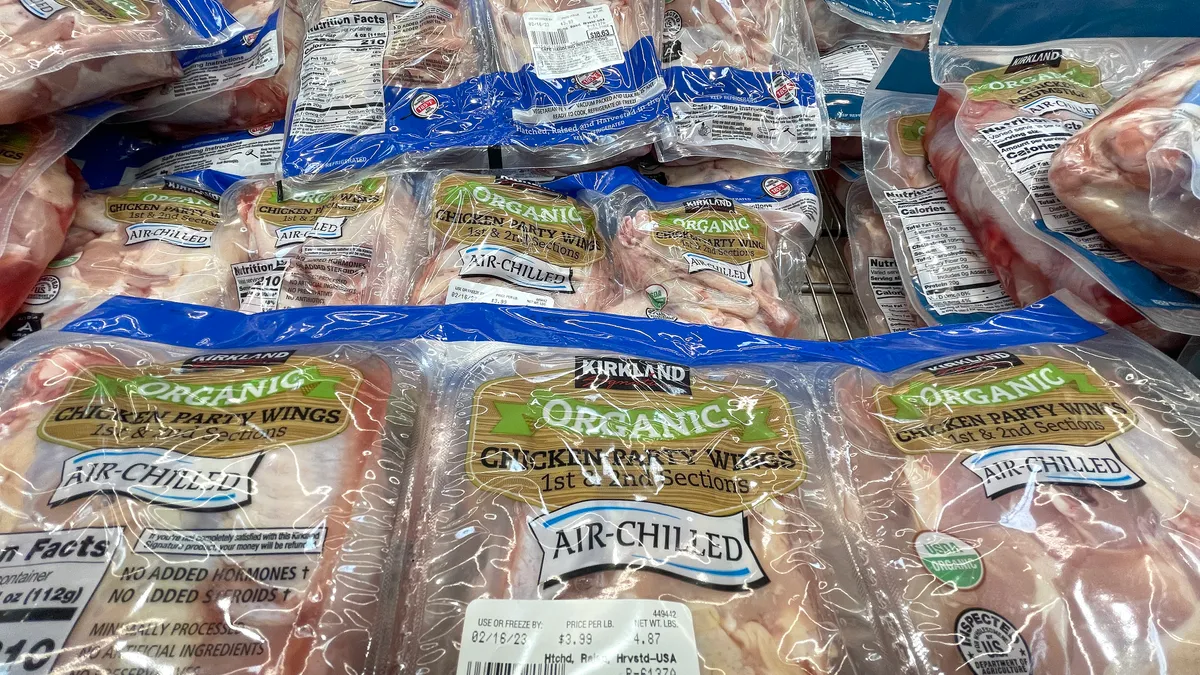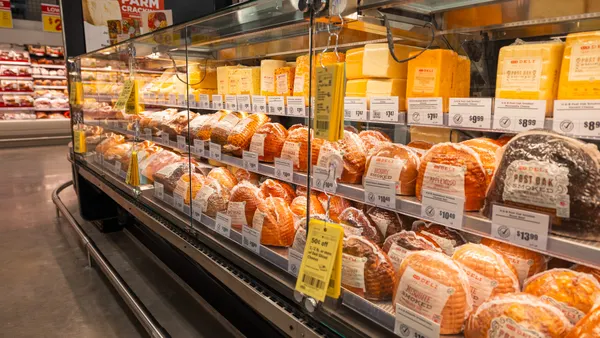Dive Brief:
- Food-at-home prices increased in April at an 7.1% annual rate, down from the 8.4% rate seen the month before, according to Consumer Price Index data released Wednesday by the U.S. Bureau of Labor Statistics.
- The food-at-home index fell 0.2% in April compared with March.
- Overall inflation continued to fall in April to a yearly pace of 4.9% — the smallest 12-month increase recorded since the period ending April 2021, the BLS noted.
Dive Insight:
In April, grocery prices and overall inflation once again followed a months-long slowdown.
Food-at-home prices have steadily come down this year, with the annual rate dropping from 10.2% in February to 8.4% in March to 7.1% in April. By comparison, annual food-at-home prices increased 10.8% in April 2022.
Four of the six major grocery store food group indexes saw month-to-month decreases last month, with milk recording the largest drop at 2%. That was the largest decline for that index since February 2015, according to the BLS.
The index for dairy and related products fell 0.7% in April compared to the month before, while the index for fruits and vegetables decreased 0.5% and the index for meats, poultry, fish and eggs declined 0.3%. Prices for nonalcoholic beverages decreased 0.1% — posting the first month-to-month drop for that index this year.
The index for cereals and bakery products index increased 0.2%. Previously, that index had posted month-to-month increases of 0.6%, 0.3% and 1% in March, February and January, respectively.
The BLS noted that the index for shelter was the largest contributor to the rate of overall inflation in April.
The latest CPI shows “promising progress” for inflation-battered shoppers, Andy Harig with FMI - The Food Industry Association (FMI), said in a statement.
“Following recent price declines in the volatile commodities of meat, poultry, eggs and fish, we are seeing that while prices for food at home fall slowly, we are still headed in the right direction,” said Harig, who is vice president of tax, trade, sustainability and policy development at the trade group.
Recent FMI research found that consumers are diversifying their grocery purchases between supermarkets, mass retailers, club stores and online companies to avoid the impact of higher food prices.
Even as the cost of food has slowly dropped from record highs seen earlier in the pandemic, industry observers have noted that consumers likely won’t see that for a while.
Meanwhile, labor and transportation expenses continue to be costly for food producers, CNN Business recently noted.
“As inflation eases and the economic landscape continues to evolve, retailers will continue to use every available tool to help keep food costs low for consumers,” said Harig.














